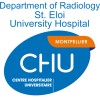
Treatment Benefits of Berberine Supplementation for Women With PCOS
Polycystic Ovary SyndromeBerberine is a plant alkaloid, reportedly possesses a wide range of pharmacological activities, including anti-obesity and anti-dyslipidemia. Berberine is an effective insulin sensitizer and has a comparable activity to MET in reducing IR. A large body of evidence suggest that Berberine dietary supplementation helps in improvement of symptoms associated with Polycystic Ovary Syndrome (PCOS). The purpose of this study is to investigate the treatment benefits of Berberine in women with PCOS.

Effect of the Sensory Integration Approach on Balance and Motor Coordination in Children With Down...
Down SyndromeDown syndrome can be characterized by global mental and physical dysfunction or isolated gait, cognition, growth, or sensory disturbances. This study was conducted to investigate the effect of the sensory integration approach on improving balance and motor coordination in children with Down syndrome.

Investigation of the Effect of Respiratory Exercises on Pain and Functionality in Individuals With...
Rotator Cuff SyndromeAs it causes pain and disability in individuals with rotator cuff lesions, which is one of the most common causes of shoulder pain, it affects performance in activities of daily living. Shoulder pain significantly affects the quality of life of individuals. The aim of conventional treatment in Rotator Cuff injuries is to reduce the inflammation in the area and to enable the shoulder to perform its normal functions. Conventional treatment is to restore muscle balance in the shoulder area. Muscle balance is achieved by strengthening the teres minor, infraspinatus, and subscapularis, which are also the humeral head depressors, and by strengthening the serratus anterior, levator scapula. For strengthening, the shoulder must have a full range of motion. In our study, stretching exercises, cold pack, Ultrasound, TENS, wand, and Codman exercises, which are classical physiotherapy methods, will be applied to all three groups. There are also studies in the literature investigating the effects of traditional physiotherapy methods on individuals with shoulder Rotator Cuff syndrome. The benefits of breathing exercises on pain, shoulder joint range of motion, and balance have all been researched in the literature. Increased diaphragm activity also guarantees that posture and body positions are maintained healthily. Diaphragm activity generally alters how an individual perceives pain. Diaphragmatic breathing is a therapeutic approach for musculoskeletal disorders.

RWE-based Treatment Patterns and Outcomes in CIDP
Chronic Inflammatory Demyelinating PolyneuropathyGuillain-Barre Syndrome1 moreTo describe the demographics, clinical characteristics, treatment patterns and clinical outcomes of chronic inflammatory demyelinating polyneuropathy (CIDP), Guillain-Barre Syndrome (GBS), and heredofamilial amyloidosis (hATTR) adult patients at a single U.K. centre.

Dynamic Stability Exercises in Patients With Hypermobile Ehlers-Danlos Syndrome and Hypermobility...
Hypermobility SyndromeHypermobile Ehlers-Danlos SyndromeBackground: Symptomatic hypermobility may lead to a number of restrictions in daily life. So far, there is a lack of effective treatments. A whole-body dynamic stability exercise intervention targets to stimulate the dynamic stability and activation of the proprioceptive system and thereby intends to improve patients' health. The aim of the current study was to examine the feasibility, acceptability and impact of a whole-body dynamic stability exercise intervention in patients with hypermobile Ehlers-Danlos syndrome and hypermobility spectrum disorder. The aim of the current study was to examine the feasibility, acceptability and impact of a dynamic stability exercise intervention in patients with hypermobile Ehlers-Danlos syndrome and hypermobility spectrum disorder. Methods: This is a mixed-methods feasibility study. Fifteen patients (14 women and 1 man) with hypermobile Ehlers-Danlos syndrome or hypermobility spectrum disorder and chronic pain were recruited from two pain specialist clinics in the South-East of Sweden. A dynamic stability exercise program for daily home-exercise was applied during five physiotherapist led sessions distributed over seven weeks. Patient reported outcome measures (PROMs) included pain and function, psychological well-being and quality of life. The clinical tests included walking and balance. Through qualitative interviews patients and physiotherapists described their experiences of the assessments and intervention. Assessments were done at baseline, after the intervention, and at the 3-month follow-up.

Effect on Kidney Function Recovery Guiding Decongestion With VExUS in Patients With Cardiorenal...
Cardiorenal SyndromeAcute Kidney Injury3 moreDuring cardiorenal syndrome type 1 (CRS1) vascular congestion is the major contributor to worsening renal function, but promoting decongestion with routine clinical evaluation is ineffective in some patients. The venous evaluation by ultrasound (VExUS) may optimize its management when evaluating for improvement in kidney function and other metrics related to decongestion.

Assessment of Physician Consideration of ePRO's, From Patients With Gout, Rheumatoid Arthritis,...
GoutRheumatoid Arthritis2 moreInflammatory rheumatic diseases affect 1% of the population. Treatment of such diseases should be based on disease activity, safety issues and other patient characteristics such as comorbidities (EULAR, 2022), leading to a higher risk of cardiovascular diseases. To this end, the general treat-to-target approach, as recommended in the EULAR guidance, may require several successive treatment lines based on updates to the patients' profile and close monitoring as the keystone of its implementation. Regular feedback from patients could be used to fuel such strategies. This feedback can be collected using an ePRO (electronic Patient Reported Outcome). The purpose of this study is therefore to assess patient management using the information provided by patients through e-PROs, which will transfer the data provided by the patient to the physician and will notify the investigators via email when a patient has completed a form (no data interpretation or alerts). The hypothesis is that the more physicians are provided with insights into their patients' health, the more they will function in a treat-to-target approach and the more often they will tend to adjust their patients' treatments.

Validation of a Quality of Life Assessment Tool in Adult Generalized Dystonodyskinetic Syndromes...
Dystono-dyskinetic SyndromesIn spite of a growing interest in the evaluation of health-related quality of life in movement's disorders management, there is no tool specifically dedicated to dystonia and related syndromes that measures both the objective severity of the handicap and the patient's feelings about the surgical treatment in terms of subjective improvement. We have been working for several years at the bedside of patients operated on in the " pathologies cérébrales résistantes " Unit on the development of a related questionnaire to assess both the motor severity and the patients' feelings about the evolution of their disease under Deep Brain Stimulation (DBS). The self-questionnaire designed would allow to a certain extent to get away from the two gold standards currently used in the field, i.e. the Burke, Fahn & Marsden Dystonia Rating Scale (BFMDRS) and the SF-36, thus facilitating the evaluation and allowing a homogenization of the practices for the different implanting centers on the french territory.

Effect of Aerobic Exercises on Static & Dynamic Balance
Down SyndromeTo determine the effect of aerobic exercises on static & dynamic balance of children in Down syndrome. When a person has Down syndrome, they have an extra chromosome. In the body, chromosomes are discrete collections of genes. They control how a baby's body develops and works both throughout pregnancy and after birth. A newborn typically has 46 chromosomes. Down syndrome is a genetic disorder that affects physical and developmental growth and can cause minor to severe issues. Mental impairment, unusual facial features, an increased risk of cardiac defects, and digestive issues that can range in severity from mild to severe are all symptoms associated with the syndrome.

An Observational Study of Patients With Metabolic Syndrome and Related Conditions
Metabolic SyndromeTARGET-METABOLIC is an observational research study to conduct a comprehensive review of outcomes for patients with metabolic syndrome and related conditions.
